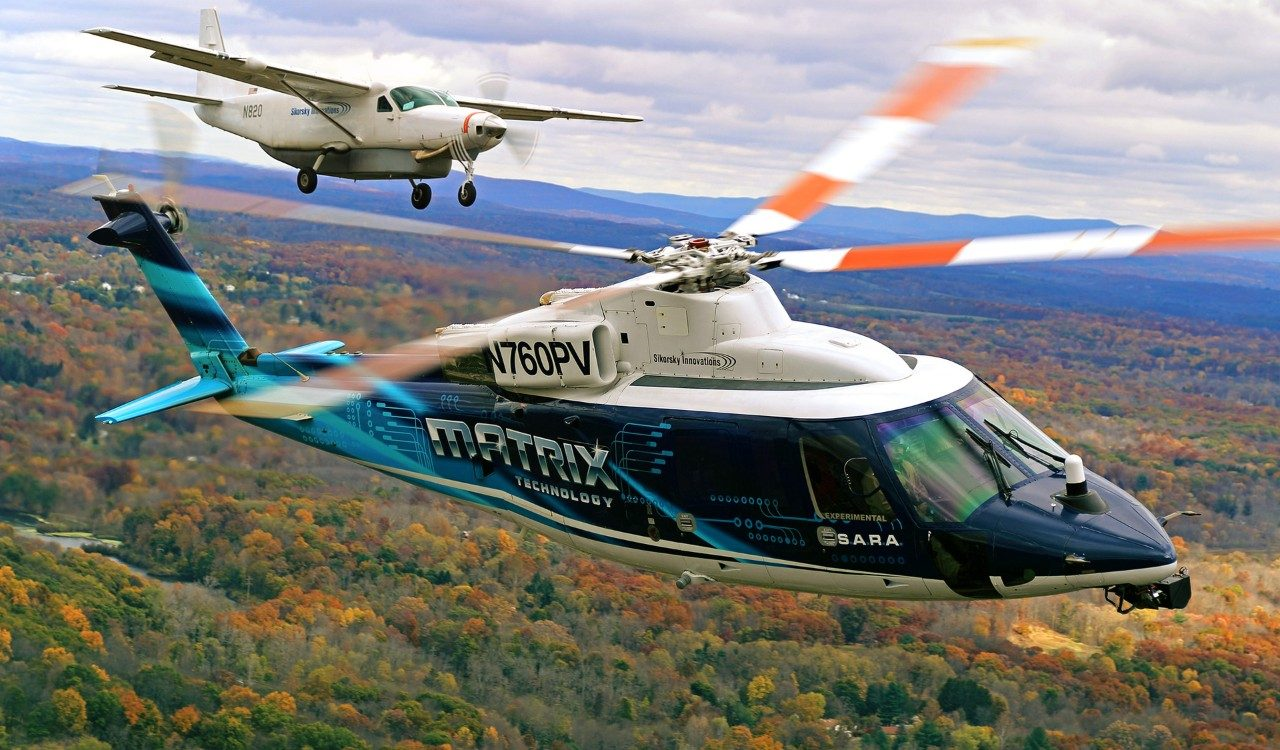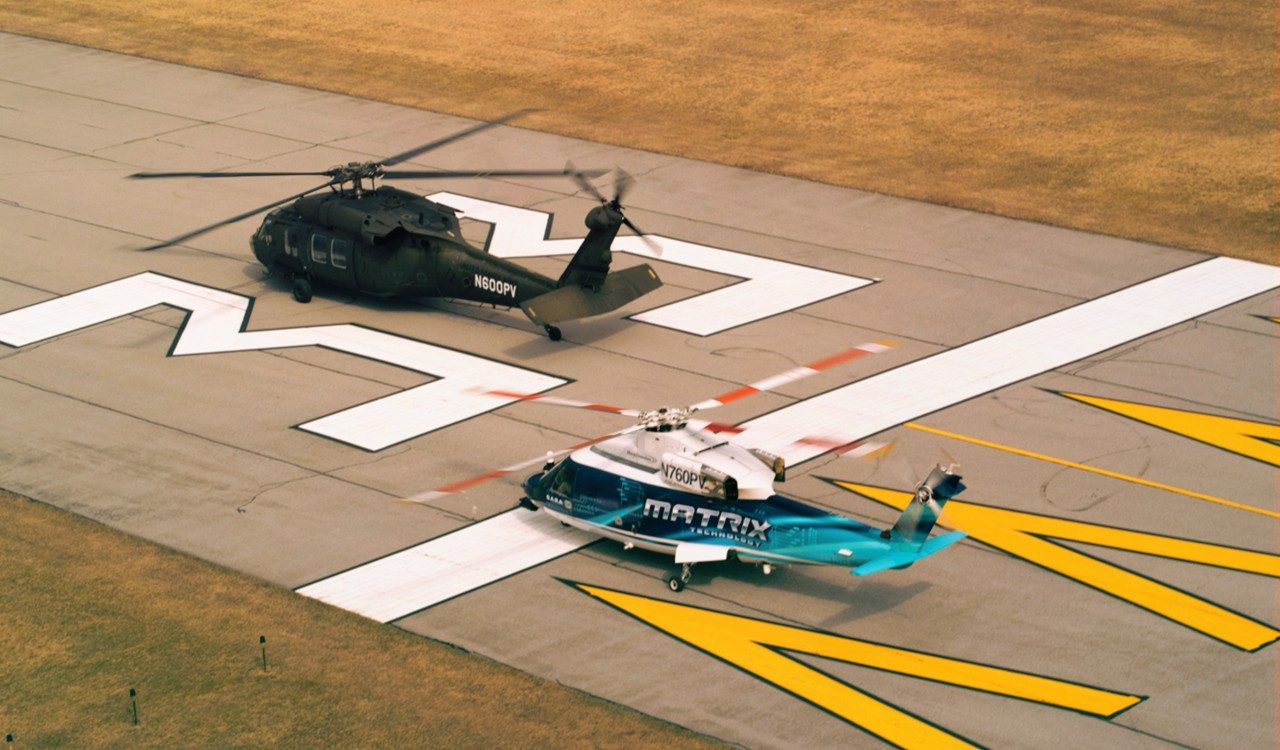01
01 Background
In 1939, the world's first practical helicopter took flight in Stratford, Connecticut. It was piloted by Igor Sikorsky, a prolific inventor and the founder of Sikorsky Aircraft. After a long and distinguished legacy of building the universally-recognized Black Hawk and several presidential aircraft, Sikorsky Aircraft ventured into autonomous aviation in 2011. A small team with the backing of the leadership acquired an S-76 commercial helicopter and outfitted it with fly-by-wire and advanced flight controls. A robust safety-critical software fallback system gained the aircraft FAA approval to run experimental software, forming the foundation for the Autonomy team.
Rapid gains and proofs-of-concept in Sikorsky's venture led DARPA to launch the DARPA ALIAS (Aircrew Labor In-cockpit Automation System) challenge with Sikorsky, Aurora Flight Sciences, and Lockheed Martin as competitors (Sikorsky had not yet been acquired by Lockheed Martin). After three rounds, Sikorsky emerged as the winner with a smart copilot and automation kit for fixed-wings and rotorcraft. One of the major reasons our system was so successful was because it was geared for certification and commercialization, not for prototyping and research. The core software was written to obey hard real-time constraints, and the supporting software modules were written with safety-criticality and certification in mind.
Our aircraft-agnostic autonomy kit was demonstrated on a fixed-wing aircraft.

Our aircraft-agnostic autonomy kit was demonstrated on a fixed-wing aircraft.
02
02 Design
The test aircraft, called SARA (Sikorsky Autonomous Research Aircraft), was outfitted with three LIDAR sensors and a multitude of cameras. The main LIDAR had a range of 1 kilometer and was used for collision avoidance and landing zone detection. The software was designed to be as aircraft-agnostic as possible, and consisted of sophisticated motion planners and perception systems.
One of the challenges posed by the ALIAS program was to not only make the aircraft autonomous, but optionally piloted—meaning, firstly, that the system needed to behave in-line with the expectations of a human pilot, and, secondly, that the system needed to allow some kind of human input as suggestions to the motion planning. The team was able to deftly overcome this challenge and the result proved for a successful demonstration of the Matrix technology to the U.S. Army in October 2018.
My work at Sikorsky consisted mainly of algorithm development in perception and motion planning; I researched and implemented novel data structures and algorithms for our application, including AABB trees, octrees, and signed distance fields. I also worked on LIDAR simulation and calibration.
The Matrix technology was recently demonstrated on a Black Hawk.

The Matrix technology was recently demonstrated on a Black Hawk.
The road ahead for Sikorsky is bright. The team recently got FAA approval to let non-pilots fly the aircraft from inside the cockpit (see here), and the kit has already been demonstrated to work well on several different kinds of aircraft. The kit was also ported to a UH-60 Black Hawk with tighter integrations into its systems to allow even more sophisticated autonomy.